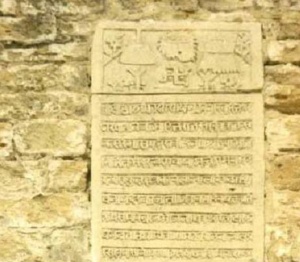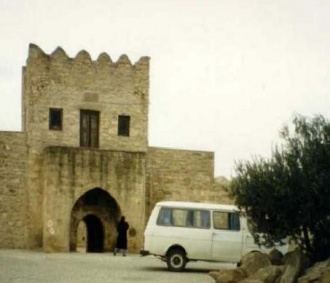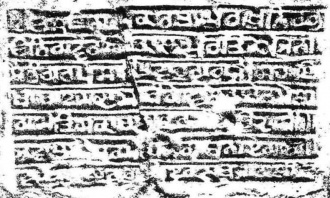Monday, January 31, 2022
Discovery of Hemkund Sahib Gurdwara Sahib and Pilgrimage
Hemkund is inaccessible from October through April because of snowbound paths and glaciers. Sikh pilgrims arrive in May and set to work to repair the damage to the path over the winter, which tradition is called kar seva ("selfless service"), a concept which forms an important tenet of the Sikh faith.
The take-off point for Hemkund Sahib is the town of Govindghat, about 275 kilometres (171 mi) from Rishikesh. The 9 kilometres (5.6 mi) trek is along a reasonably well-maintained path to the village of Ghangaria (also called Govinddham). This path can be covered either by walk or by pony and a Gurudwara here gives shelter to pilgrims. In addition, there are a few hotels and a campground with tents and mattresses. A 1,100-metre (3,600 ft)climb on a 6-kilometre (3.7 mi) of stone paved path leads to Hemkund. Overnight stay is not allowed at Hemkund Sahib, so it is necessary to leave by 2 PM to make it back to Govindghat by dusk.
From Delhi, tourists take the train to Haridwarand then travel by bus to Govindghat via Rishikesh. It is also possible to drive from Delhi to Govindghat, a distance of about 500 kilometres (310 mi) which takes around 18 hours to cover. Recently, an Indian airline company has started a helicopter service between Govindghat and Ghangria. The flight takes about 5 minutes.
A recent study examining altitude sickness at Hemkund Sahib found that almost one-third of pilgrims who traveled to Hemkund suffered from Acute Mountain Sickness (a form of altitude sickness). As approximately 150,000 pilgrims are believed to travel to Hemkund Sahib each trekking season, almost 50,000 people are at risk of developing Acute Mountain Sickness each year. The authors stated the difficult nature of the trek, limited water consumption, and lack of awareness regarding altitude sickness as the main contributory factors.
Hemkund Gurdwara Sahib
Saturday, January 29, 2022
The ‘Fifty’ under My Turban
When I started supporting turban, evidently I did not use any fifty as guided by my Dad. My Mom, being fashion conscious and modern, challenged me to use Fifty.
Now turban without Fifty is unimaginable
Friday, January 28, 2022
Hindustan Times started by Akalis
Thursday, January 27, 2022
Guru Nanak in Azerbaijan
I did some readers and found interesting details on the basis of research Arjan Muni mentions of Jawala Temple (Atash Kadeh) under heading Asfaran (45) and states: “Coming out of Nersi city, he (Guru Nanak) entered the Russian territory. This country is between Iran and Turkistan. A fire comes out of a hill, called Maha-Jawala. Gulo-lal parbat is four stoppages from there (Maha-Jwala) where a plant with red leaves remaining all the twelve months, making the mountain beautiful. It is after Urganj.
 :
:
Ateshgah
The Ateshgah monument, also called the fire worshippers' temple, traces its origins to Zoroastrianism, which took root in ancient Azerbaijan. "It is Azerbaijan which is the mother of Zoroastrianism. This was the base from where this religion spread overseas," an Azeri diplomat said.
The temple complex has evolved over several centuries. Its outer rectangular parameters house a row of rooms, added in several phases. Between the late 17th and mid-19th century, Indian traders funded the establishment of a guest room, stables and prayer rooms.
Apart from Sanskrit, inscriptions in Hindi and Gurmukhi can also be found along the monument's outer periphery. One of them refers to the site as Sri Jwalaji (temple of fire). Another seeks divine blessings from Guru Nanak, the founder of the Sikh faith.
Commencing verse Of Ad Granth
Browsing through the Internet for some information about the travels of Guru Nanak in the Middle East, I came across an article originally written by Ervad Shams-Ul-Ulama Dr Sir Jivanji Jamshedji Modi [5]. While reading through his travel in Azerbaijan I found an inscription in Gurmukhi script. Nothing has been written by Dr Modi about this inscription , he only refers to it as ‘Yet another inscription’. Besides this there is another inscription in Devnagri script that simply refers to as ‘Another inscription’. The locations of both the inscriptions have not been disclosed. However, it is believed that these inscriptions are somewhere in that temple he calls Atash-Kadeh, which is situated in Baku, Azerbaijan.
History of Atash Kadeh
According to Dr Modi the Atash Kadeh was in a place called Surkhani on the road from Baku about 30 to 45 minutes by car. The origin of this word, Surkhani, may have come from “SHO-E-LE-KHANEH” meaning the house (“KHANEH”) of the fire balls (“SHO-E-LE”). Among the ocean of these petroleum wells is situated this alleged Atash Kadeh. Not just him but any Parsee who is a little familiar with Hindu religion, their temples and their customs, after examining this building with its inscriptions, architecture, etc., would conclude that this is not a Parsee Atash Kadeh but is a Hindu Temple, whose Brahmins (priests) used to worship fire (Sanskrit: Agni).
According to Dr Modi this temple might have been built by the Hindu traders visiting Baku. But he has also mentioned that he has examined the small living rooms (cells), adjacent to the main square of this building, which resembled the Indian Buddhist monasteries cells for their monks. I think, however, it could also be possible that this building was originally built by Buddhists during the time when Buddhism was all over India, Iran and adjoining areas up to Baku, Azerbaijan. Later this place was taken over by Hindus from India during the fall of Buddhism. It is also possible that Guru Nanak during his long stay of 11 years in Middle East might have stayed at this place also to preach in the Central Asia.
Links to the Hindu faith
According to Dr Modi the inscription on the main entrance is in Nagrik (Devnagri) script, which in the beginning invokes the Hindu God, Shree Ganesha. The building is referred to in the inscription as “JWAALAAJEE” (meaning volcanic), that means some burning substance building. And the installation date is mentioned as the Hindu Vikramaajeet calendar year 1866 (equivalent to 1810 CE). This inscription contains nine lines and the figures drawn in this inscription are as follows: the first row has a flower first, then a bell (“GHANT”), then the sun, then a fire ball, and again a fruit. The second row below this has a flower first, then the trident of Lord Shiva (“TRISHOOL”), then the Swastika symbol (Hindu style), then a second trident and then a flower.
If we compare another picture of the main entrance of Baku Temple, we don’t find the inscription shown. We also do not find two parallel ridges between which this plaque of inscription is fixed. It shows that there are two main entrances. Moreover, the wall of the entrance in Fig. 3 is full of black smudges of weathering agencies and has another storey added at the top at the later date. But the wall of entrance in Fig 2 is less smudged and the plaque is free from any such smudges.
It looks like that date, 1810 CE, on plaque on the entrance in Fig 2 does not indicate the date of construction of the Temple since the entrance in Fig. 3 looks much older than 810 CE when the inscription in Devnagri was inscribed as shown on the entrance in Fig. 2. Moreover, it appears to be newer than the background wall of the entrance. It also appears that the inscription on the entrance is much newer than that of the Commencing Verse as shown in Fig 1 above
Transliteration:
1. Om safinama karatapurakha nlrabhaii
2. niravai fra] akalamurati ajuni saibham
3. guraprasadi || japn adi [sa] chu jugadisa—
4. chu hai bhi sachu nanaka hosi bhi sachu || satiguru [pra?]—
5. sadi bava Jadusahs [sukha] jisaka chela
6. bava Kagusa (a) ha ji [sa*] ka chelaba (a) va Bamkesaha jiska chle]—
7. !a „ rasaha dharama ki jagaha bana (a) i
Translation:
1. Om. There is Only One God
2-3. Truth is His Name He is the Creator, Protector, Without Fear, No Enmity, The First Entity, Without Incarnations, Self-perpetuating; With the Guru’s grace:
4. O Nanak! Think about (this) forever infinite reality (which) is true (and) will always be true!
So be merciful Guru is merciful!
5-6. (A) Bava Jadusaha, whose pupil was bava Bamkesaha,
7. whose pupil was ... rasaha built this sacred place.
The names of the persons mentioned in the inscriptions do not end with -"Singh", as usual Sikhi names. Probably, these persons were monnas, who adhered to the Sikh religion, but do not comply with external rituals prescribed by Sikhism.
Sikhnet


